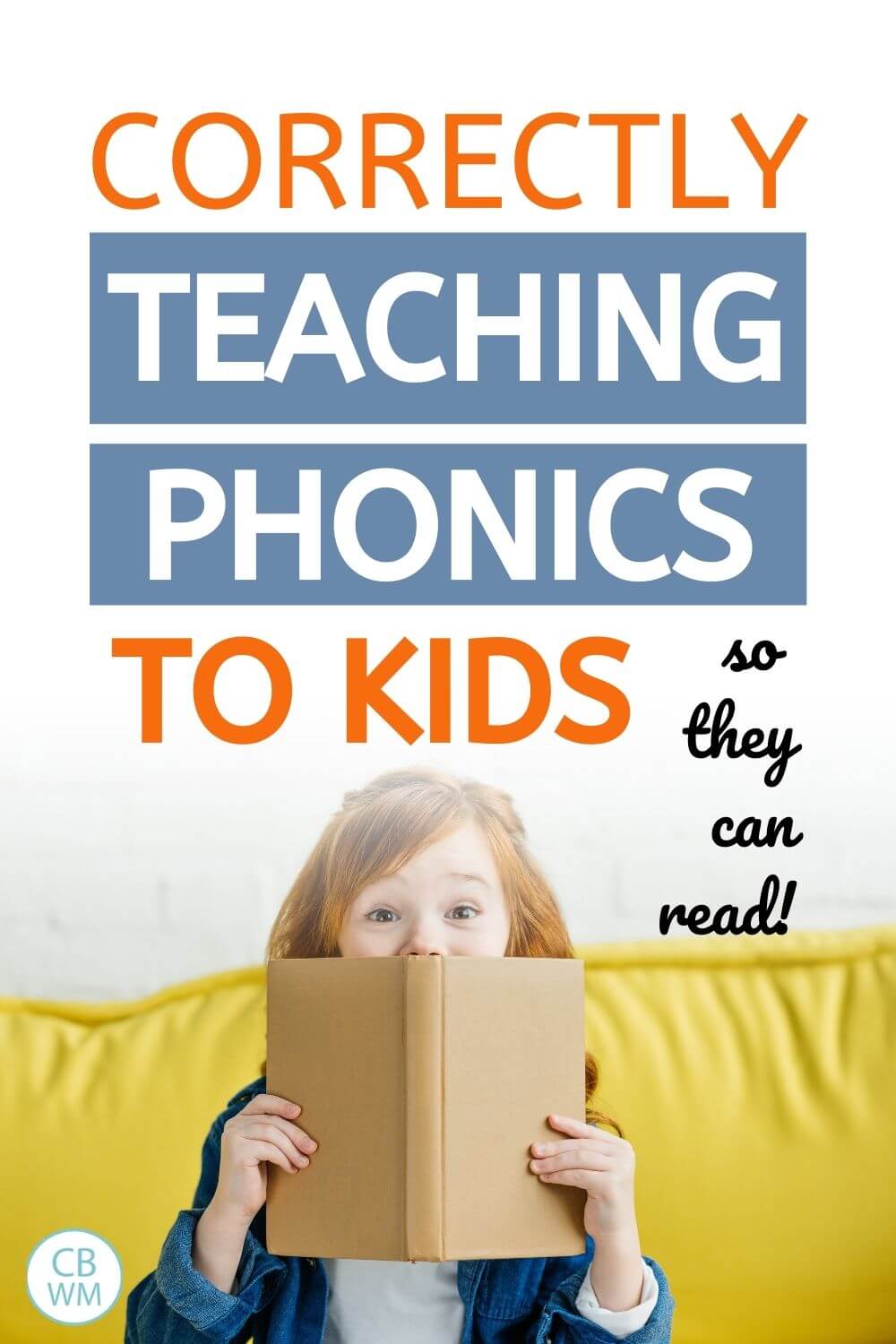Did you realize many children are incorrectly taught the sounds letters make–especially consonants? Read this to learn how to correctly teach phonics to your kids.

A little more than a year ago, Susanne, a reading specialist turned stay-at-home-mom, wrote some posts on literacy topics. Then she added twins to her barely toddler and things got a bit crazy as you can imagine :). Now she is back with another wonderful post for us! Thanks Sue!
Post Contents
Teaching Phonics To Your Kids
When teaching the correct phonics, we think of teaching children the sounds that letters make. Then eventually, children learn how to use those sounds to read.
While this is true, many parents, teachers, and parents actually do this incorrectly.
What Sounds Do Letters Make?
There are 26 letters in the alphabet; all have a unique sound or sounds that these letters produce.
Most letters in the English alphabet is a representation of a phoneme, the smallest unit of sound.
For instance, the letter D is a representation of the sound /d/, like in the word dog. When teaching this sound, some people make the mistake of attaching a vowel sound.
So instead of teaching D represents /d/, people say D represents /du/ (like in duck) or someone might say that D represents /da/ (like in dad).
The inherent problem with this is that D is not pronounced with these additional sounds. Teaching phonics this way will only confuse a young child who is learning to read.
Blending Sounds to Read
When we read, we have to take different units of sound and blend them together. If we see the word “dog”, we have to blend /d/ /o/ /g/ together. The word dog contains three different phonemes.
If a child is taught that the letter D represents the sound /du/, which is incorrect, than he will end up trying to blend 4 phonemes together, /d/ /u/ /o/ /g/.
Do you see the problem with this?
Therefore, when teaching the constant sounds, it is very important to teach them correctly without attaching additional vowel sounds to them.
How To Teach Consonants Without the Vowel Attached
In order to achieve this, you might have to visualize yourself cutting out the extra sound or “clipping” it away.
Another activity is to take a constant and attach every vowel to it and then say it aloud. For example: ba, be, bu, bo, bi. After you say these five non-sense syllables, try saying it without the vowel sound attached. You should produce the correct sound for that the letter B this way.
Be Aware of Sounds Made by Toys
Many educational toys, electronic, and computer games also make this same mistake. My son has a phonics bus that when you touch the letters it says the sound. The toy drives me nuts because it produces the incorrect phoneme (sound). For instance, the toy says, “Q says Qwa, Q says Qwa, every letter makes a sound, Q says Qwa.”
That is NOT correct Q does not have the short a sound (like in the word ant). The correct way to say Q is /Kw/ it actually sounds like a K (hard c like in cake) and W (windy breath), but there is not short a.
If you read the word queen, do you hear a short a?
I make this long point because I think we also need to evaluate the type of toys and educational software that we allow our children to be exposed to because they are reinforcing incorrect learning.
Know What Your Kids are Taught
Parents, there are many well-meaning teachers out there who are teaching your children the incorrect phonics. Colleges do not teach teachers this information. I know that is crazy, but they don’t.
Even teaching manuals do not explicitly teach this concept either.
When I was still working as a reading specialist, I found myself having to “Re-train” my elementary faculty teachers how to correctly represent the sounds letters produce. And to many of my colleges, this information was something they had never learned before but agreed made sense.
Please advocate for your children and if you notice that your son or daughter’s teacher is teaching the incorrect phonics, please schedule a conference to discuss this with him or her. If you are met with resistance, please address this with the school’s reading specialist of principals.
RELATED POSTS
- The Benefits of Audio Books for Literacy Development
- Early Literacy and Phonemic Awareness
- How to Teach Early Literacy Concepts About Print/Books

